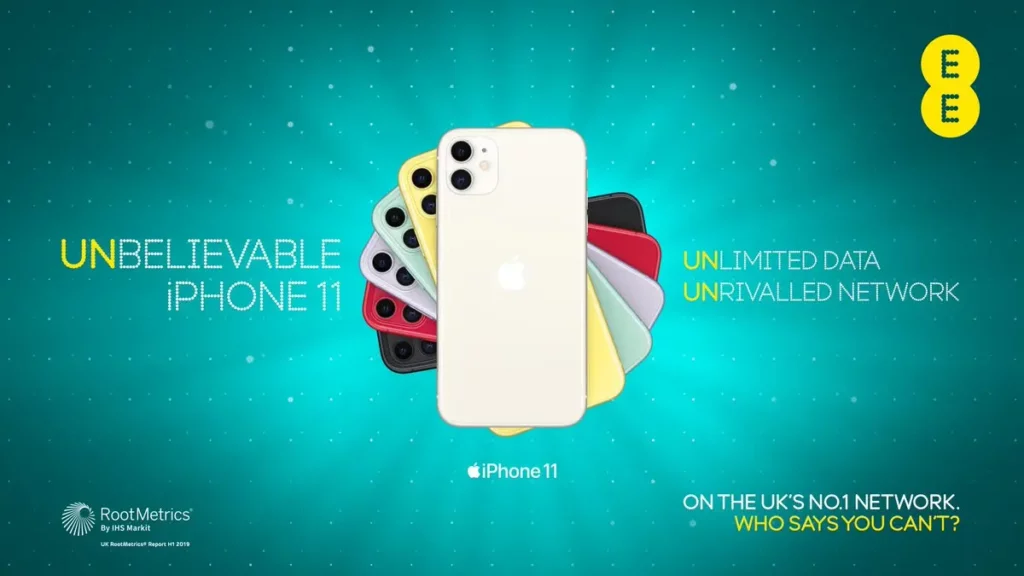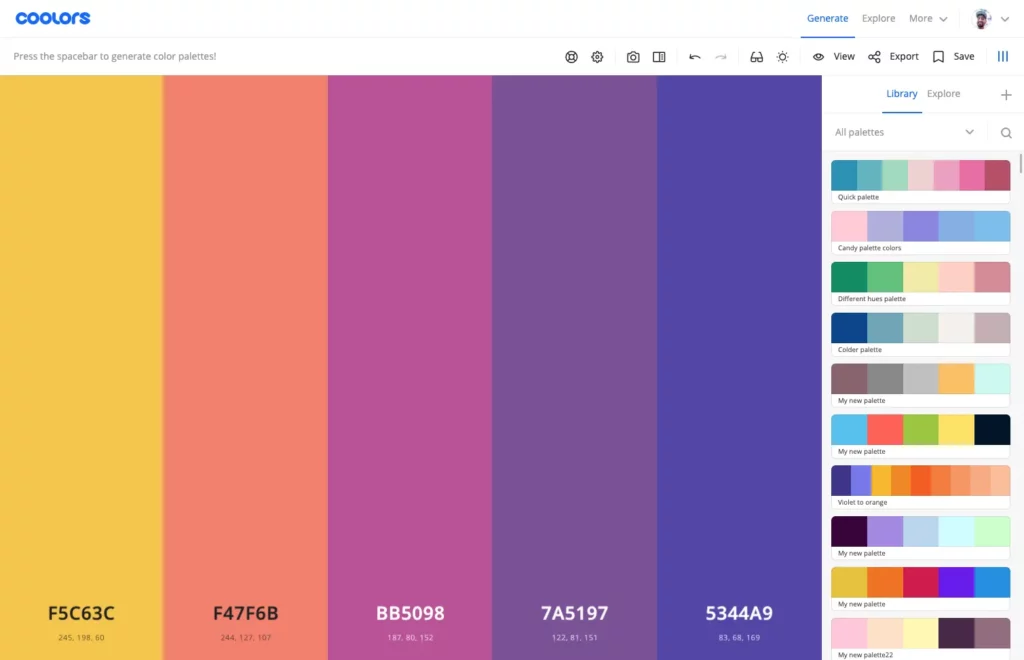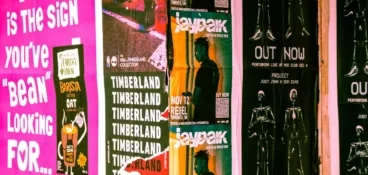Brand compliance is crucial in all strategies you create, no matter the channel you’re using. All businesses should be aware of their brand guidelines. This can be the tone of voice, your brand’s core values, or anything that portrays the image of your business. All of these things create your business’s brand.
These brand guidelines should be used throughout any communication or any work created that represents your business. Making sure you’re enforcing brand guidelines within the workplace to be used by anyone who plays a part in portraying your organization can be important to keep the style consistent.
Find out the essential steps to follow to secure a consistent brand identity, both internally and externally. Avoid wasting time repeating work or carrying out endless edits to get on brand. Stay compliant and maintain brand governance from day one with all you need to know in this article.
What is brand compliance?
Brand compliance is a set of strategies designed to control the output of your company’s marketing and communications, including:
- Aims
- Values
- Tone of voice
- Color scheme
- Writing style
- Standards
- Brand messaging
The branding should be consistent and applied throughout all of the company’s work. All assets, content, marketing, and designs should be in line with brand guidelines at all times. If this is done, then brand compliance has been achieved.
Who is responsible for ensuring brand compliance?
In most businesses and marketing teams, brand managers and brand communications specialists are responsible for maintaining a consistent brand story and style. But, in reality, anyone and everyone involved in your business can be responsible for brand compliance standards.
Most commonly this could be a marketing team member or a designer. However, through the tone of voice in client correspondence and the style of writing the business uses in multiple areas, it can technically be carried out by anyone involved with the company.
Brand compliance will have the largest impact on those involved in business output. Designers are a great example of this. They’ll have color schemes, font styles and sizes, design styles, and heaps more to stick to.
Marketing is another great example of those who should pay close attention to any brand guidelines. Adverts, articles, and emails are just a few instances where implementing this will be necessary and keeping consistent messaging throughout all work. To make your life easier, we recommend using marketing compliance software.
Why is brand compliance important?
Brand compliance ensures that everything your team creates and sends out into the world looks and feels right for your company. Here are a few main reasons why brand compliance is important:
- Furthering brand recognition
- Creating brand consistency
- Professional image
Let’s look at each of those in more detail.
Furthering brand recognition
Nobody can deny that when you see a business with a set color scheme, font, or tone of voice, you’ll automatically associate it with a particular brand. Having a brand that stays consistent sets you apart from competitors and makes people notice you.
Take two businesses that are trading. One has no guide for its branding and marketing, the other has a clear and precise manual for its brand. The business with the set color scheme and consistent style will be remembered in the future. Whereas a business with no set approach cannot compete and will be forgotten due to unorganized advertising.
It can also be a sneaky way of forming the perception of your corporation. Include your brand messaging in digital content and your company awareness will grow based on the information you’ve decided to put out.
For a masterclass in brand recognition, look at McDonald’s. In a test of their recent #RaiseYourArches campaign, 98% of viewers knew it was a McDonald’s ad before the brand logo was revealed at the end. Surely one of the most iconic brands of all time, and just one of many great McDonald’s ads.
Creating brand consistency
Brand stability can make life a bit easier when it comes to creating designs and content. Having a clear list of what you need to follow can sometimes be easier than trying to find colors and font styles that match one another.
It improves the experience for viewers of your content. If you were scrolling through social media and you saw a brand using inconsistent coloring, different fonts, and the tone of voice changing on each post, you’d probably feel that very little time has been invested in the creation of the posts. That’s not the impression you want to give to prospective clients.
Apple is the perfect example here. When it comes to marketing, Apple has to rely on tens (if not hundreds) of networks around the world to promote the iPhone. So what do they do? They limit the language brands can use to words like “powerful”, “incredible”, or “unbelievable”. This helps to maintain a consistent brand image, regardless of who made the ad.
For more like this, check out our roundup of the best Apple ads of all time.

Source: twitter.com
Professional image
It’s satisfying to see consistent branding. When brand compliance is followed, you’ll seem professional and organized. You’ll have a brand reputation that will be associated with the business when people think of you.
As you’ll come across as an expert in your industry, you’ll seem more trustworthy to your audience, helping you win new customers!
If you’re presenting your company inconsistently, you’ll seem less accomplished in your sector and therefore less trustworthy. Such a simple process as brand compliance can have a detrimental impact on the presentation of your company.
The different channels for brand compliance
The channels to consider for implementing brand compliance are not always the main platforms you’d think of, like social media and your website. Often, offline brand compliance can be just as significant.
Online brand compliance
Online channels to consider for brand compliance are usually any platform where you release content and marketing. Anything that contains written pieces by the business or uses brand colors.
Some examples of these online channels are:
- Social media
- Emails
- Newsletters
- Articles/Blogs
- Webpages
- Paid Google ads
- Paid LinkedIn ads
- YouTube
- Online use of logos
- Online banners
Offline brand compliance
Some examples of these offline channels are:
- Branded clothing
- Face-to-face events
- Signs
- Business cards
- Press ads
- Flyers
- Posters
- Packaging
- Billboards
A lot of marketing is now done digitally. But if you have physical touchpoints like a store, packaging, or a restaurant, branding throughout these makes you noticeable and able to compete with your competitors.

Source: Spaceandpeople
It’s also worth keeping in mind business values when speaking to clients and engaging with others because this can influence your reputation.
How to create brand consistency
It can be difficult to achieve stability in your brand when you’ve never had brand guidelines before. A good place to start is to define the messaging and values of your business. Knowing the message you want to portray to any future clients can be the make or break of their decision to use your service.
An important point to remember is that this process can be fun. Establishing the makeup of your brand can be a great next step for your business and allows you to be creative.
As well as deciding on your messaging and values, there are other avenues you can look at to create brand guidelines.
Defining your tone of voice
A business can be heavily portrayed through its style of writing. For example, if you’re competing in an industry like finance, having a relaxed tone of voice may not be the best option. Usually, the more serious a topic that your industry covers, the clearer and more professional your tone should be.
Sometimes doing the unexpected and standing out from your competitors can be more effective. This decision will purely be down to your opinion and what you feel will work best with your target audience.
Visual consistency
Choosing a color pallet to use for your branding can be a hard choice to make if you’ve never considered this before. A good place to start would be by using the colors from your logo.
Need help building a consistent brand? Check out our roundup of the 10 best fonts for ads. And if you’re trying to nail your brand colors, take a look at Coolors – a super-fast color palette generator that helps you get things just right. You can start fresh and use this decision to get creative .

Source: Coolors
Similarly to defining your tone of voice, you’ll need to consider your industry and what you think will resonate best with your audience.
Confirm your writing style
Most businesses have their own way of writing. This tends to be stemmed from marketing teams or writers who first created any written information for the website or any other platform.
Some businesses find that when staff changes over time, the writing style seems to be inconsistent and differs from page to page.
A good way to solve this is by confirming your writing style and keeping this recorded for future reference. A writing style guide can be the language you write in, such as UK English or US English. It can also be confirmation of capitalized words, spelling, or if you use all capitals in titles.
Delivering brand consistency
What is the point of determining your brand guidelines if you aren’t using them? The big step after you’ve made your choices for your branding is to show them to the world. Use your changes to create more awareness of your company.
Creating social posts, sending emails, and producing any form of marketing or digital content will show off your newfound brand.
It’s important to implement this online and offline with your existing clients. As we mentioned previously, you can be brand compliant throughout many other platforms as well. Simply replying to a client email can include your brand tone of voice and writing style to continue portraying a professional image even after you’ve gained the client.
Brand consistency should also be a priority with every brand refresh you do. Make sure to update all your guidelines with new characteristics and you’ll always maintain brand consistency.
How to enforce brand guidelines
Enforcing your brand guidelines on your employees is easy when you have the right graphic design project management tools to clearly show them what is expected.
Create a page with guidelines that external creators can see
Forming a page that outlines all of the guidelines for your brand is vital, but creating one you’re happy with external creators viewing is also important. This can be used for partnerships with people outside of your organization, freelancers, or agencies.
For some, these guidelines may not differ from the ones you send around to the organization. As long as you’re happy with the guidelines you’ve created for internal stakeholders to be shared externally, then it would be easier to simply share the same guide.
The guidelines might be used by external stakeholders, like a partner, to create content for your business to post on your website, as their work will need to be brand and marketing compliant.
Make templates to use across the organization of all brand assets
Create documents that contain all anyone could need to know about your brand guidelines, that can be shared throughout your organization. This will ensure that everyone can stay compliant and has no excuse to not follow them.
You can include these in one large document or break this down into documents for each brand area, such as writing style, design/color scheme, company values, etc.
Explore brand compliance solutions
Finding your company a brand compliance software that can be used when signing off work can make it easier to notice any brand mistakes. You’ll be able to check the work before it’s shared.
A tool for checking work, like Filestage, can also be useful in easing your employees into the process of being brand compliant.
Filestage provides a review and approval platform that gives employees the chance to make mistakes and get them checked before being released. They can also see where changes are required to be in line with the guidelines and learn from this for the next time.

How to maintain brand compliance
Maintaining brand compliance can be tricky. Once it’s enforced and your employees have begun using it, monitoring its continued use can be time-consuming.
Checking pieces of marketing and content before they go out, during a sign-off process, can be the quickest route to making sure all output is compliant. But, if this isn’t a process you’d like to implement for each piece, you could try checking some examples every few weeks or choosing a collection a month.
This will also make your staff aware that they’ll need to stick to the guidelines and not be lazy with following them as these checks will take place.
A situation to be aware of is that a business changes and grows over time. This can make it difficult to stick to the same brand guidelines you created when your business was first formed.
Your target audience may change, you may add additional offerings to your company or you aren’t receiving the same traffic as you were previously. All of these factors can mean it might be time to review your brand guidelines again.
Reviewing your brand guidelines when you have business growth or changes would be the best solution to staying on top of any guideline updates.
Final thoughts
Brand compliance is vital to growing your business and shows your clients that you’re professional and organized.
You can easily create effective brand guidelines to use online and offline by recording them for your entire business to access. Getting all employees from your corporation to learn these guidelines and become brand compliant in their work is effortless if you have the right templates and tools to do it.
To continue to keep a consistent brand that fits your audience and business growth, it’s a good idea to reevaluate your guidelines every so often.










